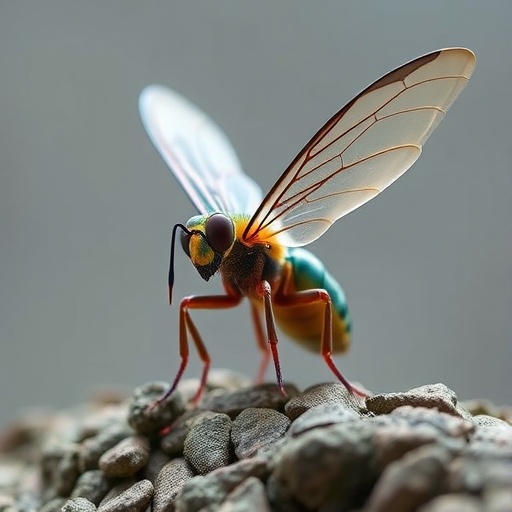In a remarkable evolution of drone technology, the Singapore University of Technology and Design (SUTD) has unveiled a cutting-edge innovation in the form of a samara-inspired monocopter. This breakthrough comes a decade after the SG50 Multi-Rotor Drone project, which aimed to create a drone capable of flying for an impressive 50 minutes. Historically, most consumer quadcopters fell significantly short, often providing little more than half that flight duration. Under the aegis of Associate Professor Foong Shaohui, the original project not only met its endurance target but also highlighted the challenges posed by size, complexity, and weight in drone design.
Fast forward ten years, the focus at SUTD has drastically shifted. Rather than pursuing further efficiency improvements for the multi-rotor design, Assoc Prof Foong and his research team looked towards nature for inspiration, specifically the aerodynamic prowess of the samara—those spiral-winged seeds released by maple trees. Embracing a minimalist approach, they engineered a lightweight monocopter that utilizes a single actuator to enable efficient and controllable flight.
In their study published in the prestigious IEEE Robotics and Automation Letters, titled “Design and optimization of a samara-inspired lightweight monocopter for extended endurance,” the researchers disclosed their meticulous design process. The outcome is astonishing: a drone weighing only 32 grams capable of hovering autonomously for 26 minutes. This achievement far exceeds the performance metrics of typical drones within the same weight class, thereby challenging conventional understandings of drone performance.
As Assoc Prof Foong elaborated, the rationale behind this design transformation is rooted in the inherent inefficiencies associated with scaling down technologies. Small drones often succumb to poor endurance primarily due to the limitations of their small propellers, which generate finite thrust at high power consumption. Their innovative monocopter design addresses these limitations by adopting principles observed in nature, effectively reorienting drone design philosophy towards maximizing efficiency rather than merely increasing power.
Nature’s samaras utilize a clever approach, leveraging passive stability while crafting an aerodynamically efficient flight characteristic. Assoc Prof Foong emphasized that every portion of the maple seed contributes to its lift—an insight that was instrumental in developing an airframe design where each component serves a purpose without redundancy. This leads to a design ethos that champions resource efficiency and simplicity over excessive intricacy.
The integration of artificial intelligence has also played a vital role in this engineering endeavor. While inspiration was drawn from the natural world, the optimisation of wing geometries and balancing mass distribution was significantly enhanced through advanced AI-driven methodologies. Such techniques allow researchers to rigorously explore various design configurations efficiently, sidestepping the need for exhaustive manual testing.
Unlike traditional quadcopters that depend on multiple rotors for flight, the monocopter developed by the SUTD team demonstrates that a solo actuator suffices. This pivotal component spins the winged body to maintain stability via passive dynamics while simultaneously generating lift through the drone’s expansive airfoil design. The resulting structural integrity reflects a profound simplicity that belies its effective performance.
The optimization process behind the monocopter was exhaustive and intricately detailed. Combining classical aerodynamic theories with contemporary real-world performance models, researchers employed a surrogate optimization method, a cutting-edge data-driven algorithm to refine every aspect of the monocopter’s design. Ultimately, their efforts yielded a drone with a power loading ratio of 9.1 grams per watt, setting new standards for micro air vehicles in terms of both size and hovering capability.
Research Fellow Cai Xinyu, who contributed to the drone’s development, expressed the excitement of their achievement, noting the viability of small aerial robotics achieving endurance benchmarks traditionally expected from larger systems. This breakthrough demonstrates that advancement in drone technology does not solely hinge on increased size but can be achieved through refined engineering and intelligent design practices.
The potential applications for this monocopter are vast and varied. Its lightweight and enduring characteristics herald possibilities in low-cost, long-duration missions. Among these is the exciting proposition of a resilient, reusable radiosonde— a weather-monitoring instrument traditionally deployed via balloons. This innovative approach recently garnered recognition as the Sustainability Winner at the James Dyson Award for 2024, further validating the environmental impact and practical utility of this aerial technology.
While the current prototype leverages readily available commercial components, there are ambitious plans for the future. Research teams are aiming to explore bespoke materials to enhance the performance of the monocopter further while broadening its payload capacity and extending flight duration without significantly augmenting its weight. The evolving design will also consider bio-inspired morphologies, ensuring that every innovation continues to push the limits of drone capabilities.
The story of the SG60 monocopter encapsulates an impressive technological journey that illustrates not only continuity but a significant departure from traditional drone engineering paradigms. With aspirations set high, the SUTD team envisions developing a prototype capable of achieving over 60 minutes of flight duration, aptly commemorating Singapore’s upcoming 60th anniversary. In an emphatic statement, Assoc Prof Foong summarized their mission by highlighting that their work encapsulates not just technological innovation but a sustainable vision for the future of aerial robotics.
In summary, the development of the samara-inspired monocopter signifies a formidably innovative leap in drone technology, underpinned by a rigorous research approach, clear inspiration from nature, and the impactful integration of artificial intelligence into the design process. This project stands as a testament to the potential of biomimicry and advanced engineering in transcending previously understood limitations of drone technologies, providing a vision that challenges the conventions of scale and efficiency.
Subject of Research: Samara-Inspired Monocopter Design
Article Title: Small but mighty: A biomimetic idea takes flight
News Publication Date: October 2023
Web References: IEE Robotics and Automation Letters
References: N/A
Image Credits: Credit: SUTD
Keywords
Biomimetic drones, monocopter design, drone technology, lightweight drones, SUTD, AI in design, sustainable engineering.




